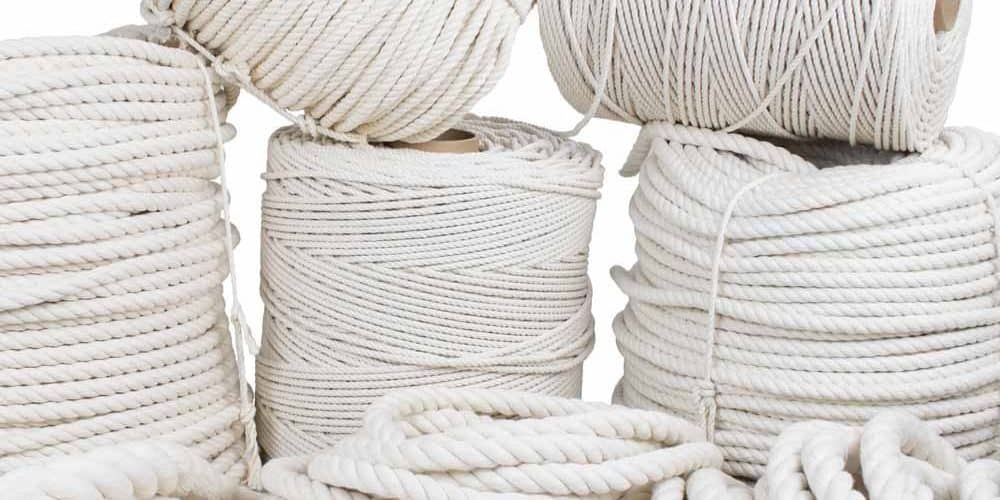Cotton rope is a commonly used material, from tying up animals to creating comfortable outdoor seating. While there are synthetic alternatives to this design, such as nylon and polyester, there are some areas in which braided cotton rope is still superior.
While it has all the practical uses of any other type of rope, one of the most common uses for this material is in the making of hammocks. Cotton rope hammocks have a few distinct advantages over those composed of synthetic materials. Cotton is generally soft to the touch, unlike rougher nylon and polyester ropes, making it a much more suited creating comfortable lounging equipment. Large cotton rope is also more elastic than synthetic ropes, allowing it to conform to the shape of the body and offering greater support.
It is also quite light, allowing for easy transport of the hammock, either to different locations outside or in the house for the winter. The fabric’s ability to breathe also increases the comfort of cotton hammocks. The airflow through the fabric allows for greater cooling and prevents perspiration from becoming trapped against the skin, a common problem with synthetic hammocks. Since most of these lounging chairs are used in the summer months, the ability to breath can become incredibly important.
There are some factors to consider when looking at cotton rope hammocks, however. Since the material is organic, it tends to absorb water, rather than allowing it to run off. This will not only make the hammock much heavier, risking breakage to some of the strings, but it can also lead to the development of mold and mildew. A mildewed hammock is next to impossible to fix and usually must be discarded, as it may cause respiratory problems. Rope made from cotton is also more sensitive to UV light than synthetic ropes and is more likely to fade over time. This is not a problem in naturally colored hammocks, but if bright patterns or colors are included, they will begin to loose their vividness.
The best policy is generally to take a cotton hammock inside when it is not in use. However, there are a few treatment options, including scotch guarding and UV treatments, that can make the hammock more durable.
Another common problem with twisted cotton rope is its tendency to shrink. Under most circumstance this is not much of a concern. Uniform shrinking in a hammock or on a tied fixture is not generally a problem. However, when black cotton rope is used in horse halters it can become a major concern. As the cotton shrinks, the halter tightens, sometimes hurting or even strangling the animal. If a person uses natural cotton rope in horse halters, it is important to watch them carefully and be ready to readjust the tightness if the horse shows any signs of discomfort, especially in rain or high humidity.
Cotton rope does work very well in toys for animals, however. When pulled apart, the fibers tend to break into smaller pieces, keeping the animal from becoming tangled in the threads. There are specially made bird toys that emphasize this quality in the rope they produce, leading it to come apart easily in small, harmless puffs of cotton. When used in chew toys for dogs, the cotton threads act as a kind of floss, keeping the dog’s teeth cleaner and more germ free. This can prevent all kinds of problems, such as bad breath, tooth decay, and gum disease. As an organic material, cotton is much less harmful if it is ingested as well. Synthetic fibers can do much more damage to an animal’s digestive tract and may require the assistance of a veterinarian to remove.
Cotton rope serves in many functions. Its elasticity and softness make it great for hammocks, and its tendency to break into smaller pieces when torn make it safe for small children and animals to play with without as much risk of entanglement or strangulation. It does have its limitations however, which should be taken into account before it is used. Greater care must be taken to maintain rope made of cotton and protect it from damage. It is not well suited to very damp environments, such as tying up at boat docks. As long as it is used for it’s intended purposes, however, rope made of cotton is a useful and valuable tool.
Related Posts



